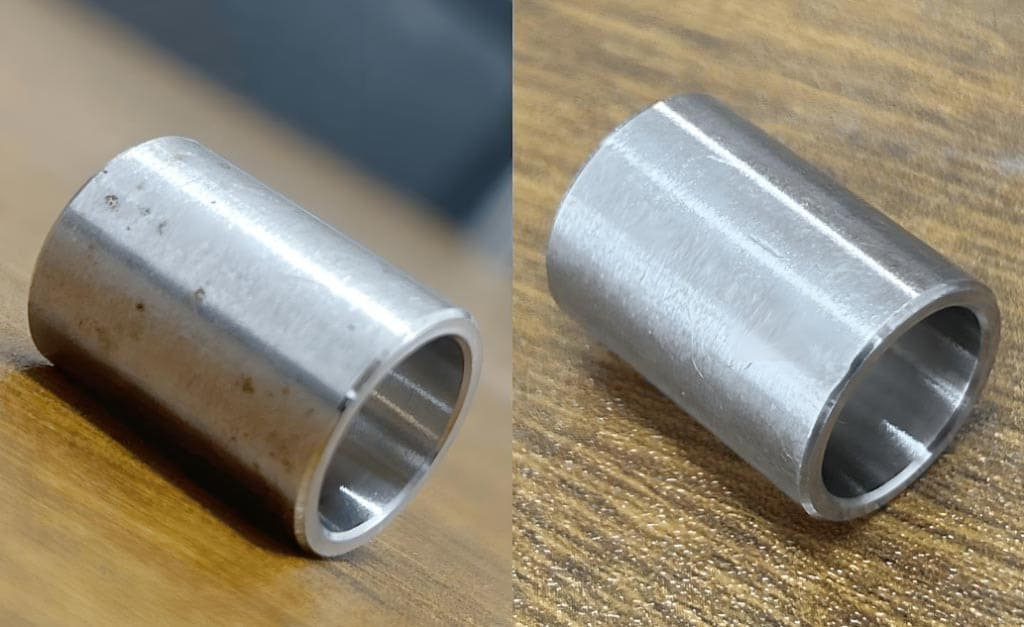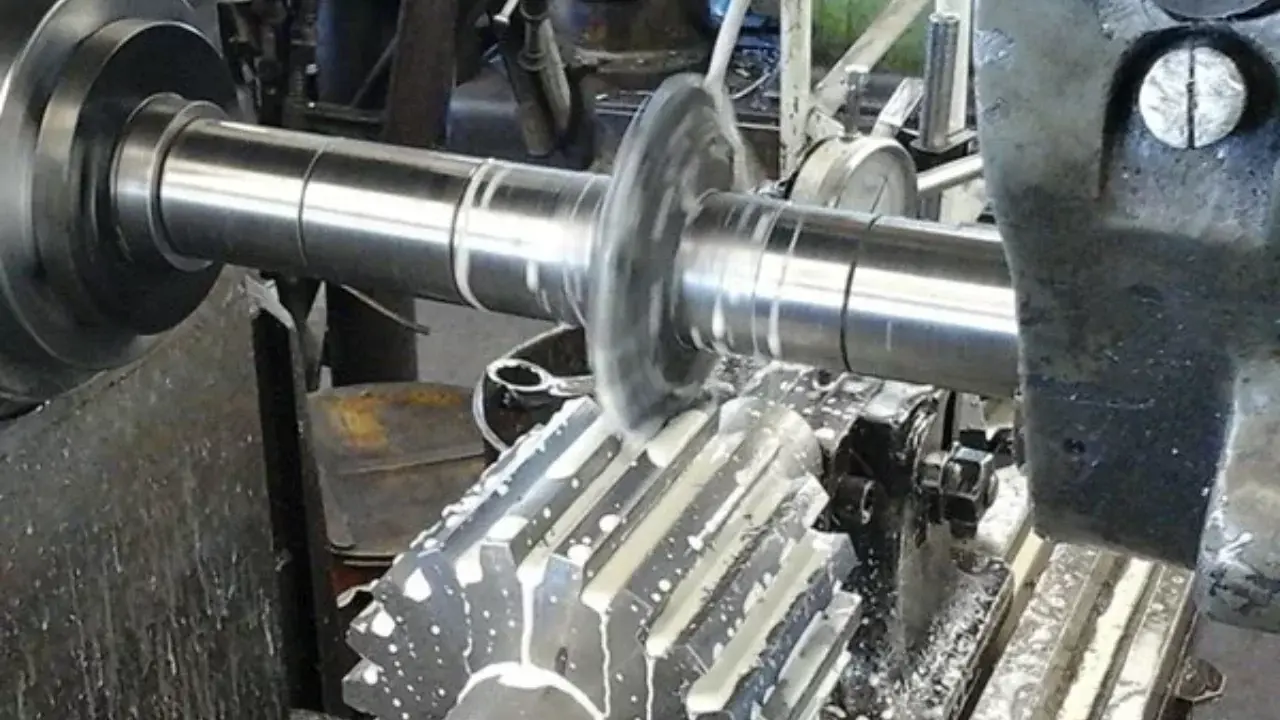Introduction
The final phase in CNC machining is surface finishing, which is crucial for producing an attractive and useful CNC machined product. In addition to many other benefits, applying a finish to a CNC-machined surface can make a component look better, get rid of faults and extra material, increase resistance or strength, and much more. For CNC machined items, there are numerous surface finishing options, including as-machined, anodized, and powder coated. Bead blasting, one of the most reasonably priced surface treatments available, will be thoroughly examined in this essay.

What is bead blasting?
Abrasive blasting techniques like bead blasting involve projecting material onto a surface. Abrasive blast cabinets, which typically accelerate the media using compressed air, are frequently used for the process. Additionally, they give the operator a contained area where they may work closely with the parts without contaminating the air with dust or other particles. Bead blasting frequently employs round glass beads
Bead blasting is connected with the use of spherical-shaped media, in contrast to other methods of media blasting, which often use angular-shaped media. A little dimple is created at the point of impact when a piece of rounded media collides with a part's surface. Thousands of these dimples continually appear all over the surface as the process continues. Due to how light bounces off the dimpled surface when utilizing finer grades, the blasted surface will appear bright with a matte or satin-like texture. For a rougher but homogeneous surface, coarser beads might be utilized.
How does bead blasting work?
Media in the form of beads or spheres are thrown against a surface during bead blasting. Any material that has to have its surface finished by blasting, including aluminum, stainless steel, and other materials, can be used.
A substantial quantity of abrasive blasting is frequently carried out with media that has been cut unevenly or that is rough, leaving a surface finish that is grittier. Bead blasting uses round, spherical material that, when impacted on a component's surface, leaves a smooth, uniform finish.
Additionally, the flexible conditioning of the available substrate is made possible by steel shot blasting in this method. Bead blasting is a method used by manufacturers to achieve even, smooth surfaces. For items meant to have a smooth satin finish, some individuals also choose this approach.
Manufacturers can obtain a dependable, high-quality surface finish with the bead blasting process. The use of the tiny glass beads is best for aluminum items that need a satin finish. As they conceal any flaws in the substrate surface, the coarse glass beads provide a consistent rough texture.
Other substances will make any substrate they come into contact with even darker and give it a greyer finish. Ideal grits can be found in substances like silicon carbide, garnet, or aluminum oxide. Glass bead blasting, on the other hand, enables the substrate to keep its natural color and provides a polished surface quality.

Materials used for bead blasting
· Glass Bead
One of the most popular media types for the bead blasting technique is glass beads. They are often manufactured of a lead-free, soda-lime glass type that is chemically inert and environmentally beneficial because it doesn't contain free silica. Glass bead media is quite tenacious and frequently reusable up to 30 times when used properly. This kind of media helps maintain the material's base color by not coloring the surface upon impact.
Although flexible for many uses, glass beads are inefficient at etching surfaces to prepare them for paint and may not be as ideal for very durable materials. For applications including peening, semi-polishing, or surface cleaning, this kind of media is perfect.

· Steel shot
The utilization of steel shot is yet another media type. It is created by casting tiny steel beads in diameters between S-70 (about 0.125mm screen size) and S930 (about 3mm screen size), which are SAE standards. There are also different hardness ranges, ranging from 62 Rc to 40 Rc. Steel shot is incredibly tough and dense, and because of this, it may frequently be reused hundreds of times! The most frequent applications for this kind of media include cleaning, de-rusting, stripping, and shot peening. By employing steel shot media while shot peening metal surfaces, stress can be released and the metal can be hardened to prevent metal fatigue.
It is generally not appropriate to utilize steel shot with lighter metals or plastics; it is best used for heavy-duty applications and materials like steel and cast iron.
· Aluminum oxide
In place of sand in the sand blasting process, aluminum oxide is a robust and abrasive grit media with an angular shape that is frequently utilized. Even the hardest materials can be easily sliced through and etched by it because of its hardness and angular shape. It is frequently used to provide surfaces a uniform appearance, smooth down sharp edges, and prepare surfaces for painting. The grit size used will typically correlate with how harsh the finish is. A surface will etch more quickly and produce a rougher finish with larger grit sizes, but a smoother finish will take longer to process with smaller grit sizes.
Aluminum oxide blasting leaves surfaces with a uniform matte texture that looks lifeless. The hue of aluminum oxide is typically brown and it has the potential to stain things. To create pieces that are uniformly matte after anodizing, aluminum oxide can be applied first. Applying coatings to plastic parts is not recommended.
· Plastic Media
Although there are many different kinds of plastic blasting media, urea is the most typical and frequently utilized. It is constructed of angular-shaped scraps of recycled plastic. It is significantly gentler than the majority of other abrasives, highly recyclable, and lightweight because it is made of plastic. Because of this, it can be used without harm on delicate parts or materials. Lightweight plastic particles may be accelerated to high speeds by blasting equipment, which makes it efficient for quickly removing light coatings. De-flashing and deburring procedures for molded parts can also be aided by the use of plastic blast media.
Although plastic media like urea are great for cleaning and stripping applications, they are not a suitable choice for getting cosmetic finishes since they do not dent the surface like other kinds of media.

F.A.Qs
What is the difference between bead blasting vs sand blasting?
While both bead blasting and sand blasting are forms of media blasting procedures and may serve the same purposes, they are each unique with their own benefits and drawbacks. We've detailed some of the key factors for each below to assist you better understand the differences and decide which is best for your project.
Bead blasting
Bead blasting involves the rapid acceleration of spherical-shaped media, typically formed of glass, in the direction of the work surface. The media's spherical shape has a peening effect that leaves the surface covered with tiny dimples. The portion has a dazzling and uniform satin-like look due to the dimples' function as tiny mirrors that scatter and reflect light in the direction of the spectator.
Sand blasting
A more conventional abrasive media blasting method uses sand blasting, in which silica sand is launched at the workpiece under intense pressure. Sand particles' uneven shape and sharpness make them easily able to cut into and etch surfaces. Sandblasting can be used to shape surfaces, smooth rough surfaces, and remove surface pollutants like rust or corrosion because of its high abrasion. Abrasive media other than silica sand are now frequently employed in its place, despite the fact that it is nevertheless occasionally used due to potential health risks. Components that have been abrasion blasted typically look duller than parts that have been bead blasted.
How safe is glass bead blasting?
Using glass beads is frequently safer than using alternative blasting media. It has less to do with the silica sandblasting-related dust and debris. Users may be confident that the blasting process will be secure, comfortable, and adequately protected.

Is bead blasting expensive?
Glass bead blasting is reasonably priced and yields top-notch results. Glass beads can be reused up to 30 times and are inexpensive to create. This demonstrates how economical this procedure is.
What purpose does bead blasting serve?
Bead blasting has various advantages since it produces soft, uniform finishes. A bead blast treatment enhances the part's mechanical durability and cosmetic appeal. It is a flexible method that works with metals including cast iron, stainless steel, and aluminum. As a result, a variety of industries use bead blast surface finishing. The medical, automotive, aerospace, and military sectors are a few of these industries.
Conclusion
While maintaining dimensional precision, bead blasting uses spherical-shaped media to treat metal objects in a variety of ways, including peening, applying satin finishes, and semi-polishing. To meet the needs of your project, other abrasives can be utilized in conjunction with media blasting. You can get consistent results that live up to your expectations by comprehending how various media possibilities differ from one another and adhering to best practices for defining needs. If you want to know more about sandblasting, you can contact us. At the same time, you are also welcome to leave a message in the comment area, we will give you feedback within 24 hours.




